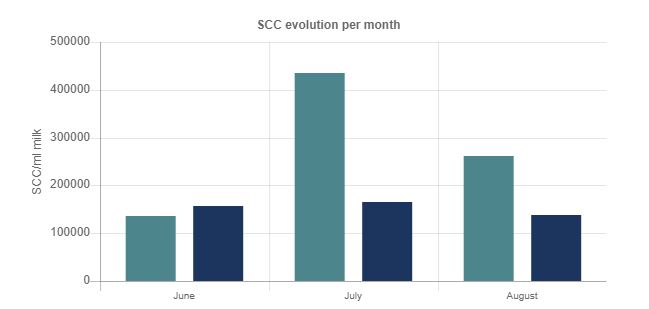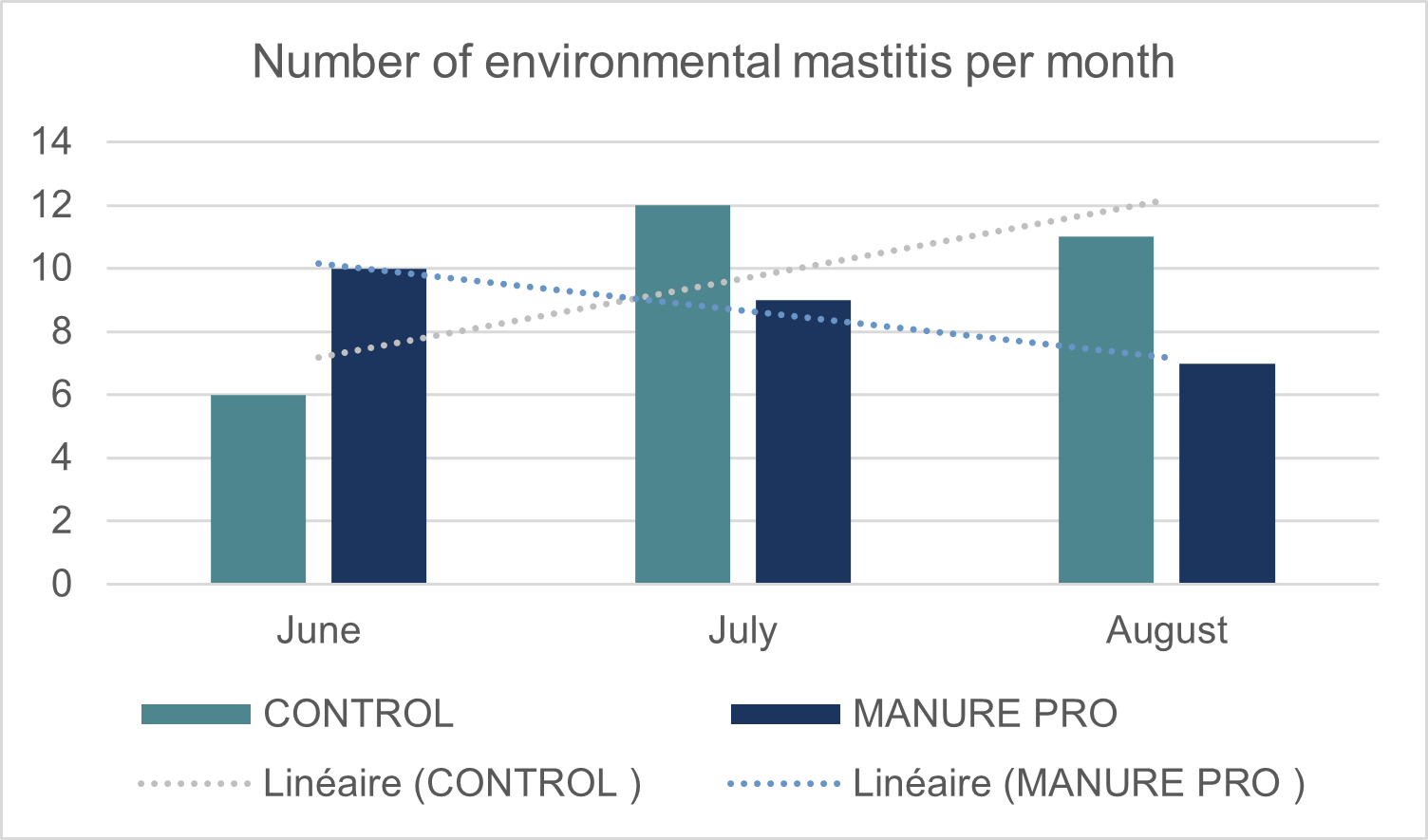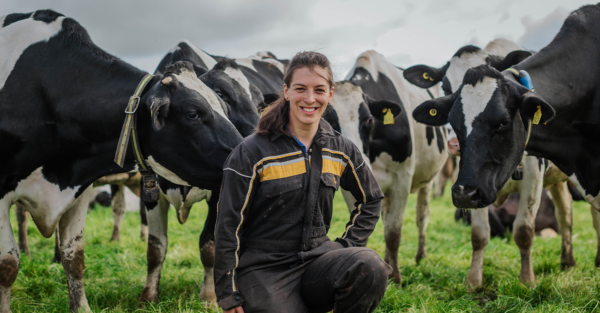Blog | Reading Time 4 minutes
Maintaining bedding quality can benefit udder health
Did you know that a cow spends at least 12 hours per day lying down, either resting or ruminating? It is easy to understand how the microbial quality of the bedding and manure — that are in close contact with the udder for so long — is an important factor to help maintain a healthy udder and reduce the risk of environmental mastitis.
From bedding to udder health
Bedding is a source of heat, moisture, and organic matter. It represents a perfect environment for undesirable microorganisms such as coliforms or enterobacteria to grow.
Studies have shown a direct correlation between the number of coliforms in the bedding material and the cow’s teats. This environment also can increase the risk of high somatic cell count (SCC). Several publications show the link between high levels of SCC and the incidence of mastitis in farms.
An important but preventable issue
Mastitis is considered the most common disease in dairy cows. It negatively affects their performance, welfare, and longevity as well as farm profitability. Linked to both milk production loss and treatment costs, the cost of mastitis for dairy farmers can be estimated at 277€/cow in early lactation to 168€/cow in late lactation. About 70% of mastitis cases are caused by bacterial infections.
SCCs are a useful predictor of intramammary infection. This metric helps assess the milk quality, hygiene, and mastitis control at the herd or individual cow level.
Focusing on hygiene and mastitis prevention measures from the milking parlor to the barn — in particular at the bedding management level — is important for herd health and profitability.
Microbial management of bedding and manure
Let’s look at cow bedding from a microbiological point of view. We know that it harbors important microbial populations, organized in ecosystems. Fortunately, most microorganisms are either beneficial or neutral to their environment. On the other hand, some undesirable ones can be pathogenic and may infect the animal. Optimizing the balance of these microbial ecosystems through bedding and manure microbial management represents a valuable solution to help maintain a safe environment for the animal.
It appears the inoculation of the bedding/manure with beneficial bacteria and enzymes promotes the development of beneficial microorganisms to help maintain bedding quality.
Such an inoculant has been developed by Lallemand Animal Nutrition by selecting specific lactic acid bacteria (LAB) and Bacillus strains: MANURE PRO.
In addition, lignocellulolytic enzymes are included in the formulation to enhance the fermentation and “pre-composting” of the manure. These enzymes release specific five- and six-carbon sugars from the complex sugars present. The sugars are then used as substrates and metabolized by the LAB and Bacillus strains.
Bacterial inoculants should be added at a regular frequency. Weekly applications are typically sufficient. They are applied either by spraying after dilution in water or by spreading on the bedding material when they are formulated in dry bedding conditioners.
Bastien FRAYSSINET, Technical deployer – Animal Environment, Lallemand Animal Nutrition
Farm results
A study was conducted in the Czech Republic from June to September (Lallemand Animal Nutrition, internal data, 2021) to assess the link between bedding and manure microbial inoculation using MANURE PRO, to udder health and milk quality (SCC, milk flora). Four pens of 55 cows each were used in the study: 2 pens without bedding inoculant, and 2 pens with MANURE PRO.
Prior to the trial, the farm had a history of high mastitis prevalence, 90% of the time the disease was caused by environmental contaminants as analyzed by farm cultures. The herd experienced peaks during the summer months.
The study confirmed that by maintaining the bedding quality, MANURE PRO:
- Significantly helped maintain a low SCC level in milk during the summer months (Figure 1)
- Helped reduce the risk of being over 250,000 SCC by 5.3 times on average for the MANURE PRO cows vs. control
- Tended to reduce the risk of environmental mastitis (Figure 2) with an overall downward trend through August
- Had no impact on the milk microflora (both total flora of milk and spore content)
This trial indicates that over a three-month period, the microbial bedding inoculant, by maintaining the quality of the bedding material, showed benefits on udder health parameters as measured by SCC and incidence of environmental mastitis.
Conclusion
Cows spend more than half their lives lying down. There is a strong correlation between the microbial condition of the bedding material and udder health, as defined by SCC, and environmental mastitis. In addition to good hygiene practices, dry cow management, and milking management, the use of a bedding inoculant with live bacteria (specific LAB, Bacillus) and enzymes represents an interesting tool to help maintain bedding quality and thus ensure optimal udder health, even under conditions of high microbial pressure.
Published Nov 30, 2022 | Updated Jun 25, 2023
Related articles
Need specific information?
Talk to an expert




